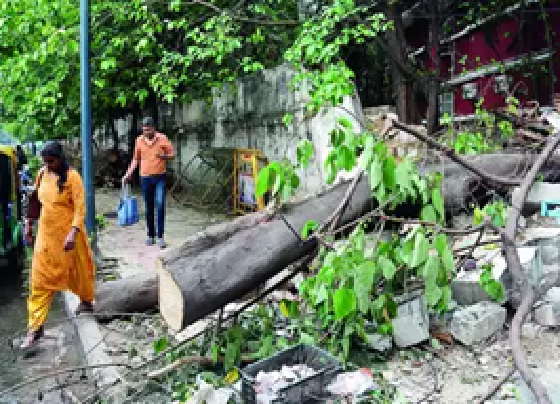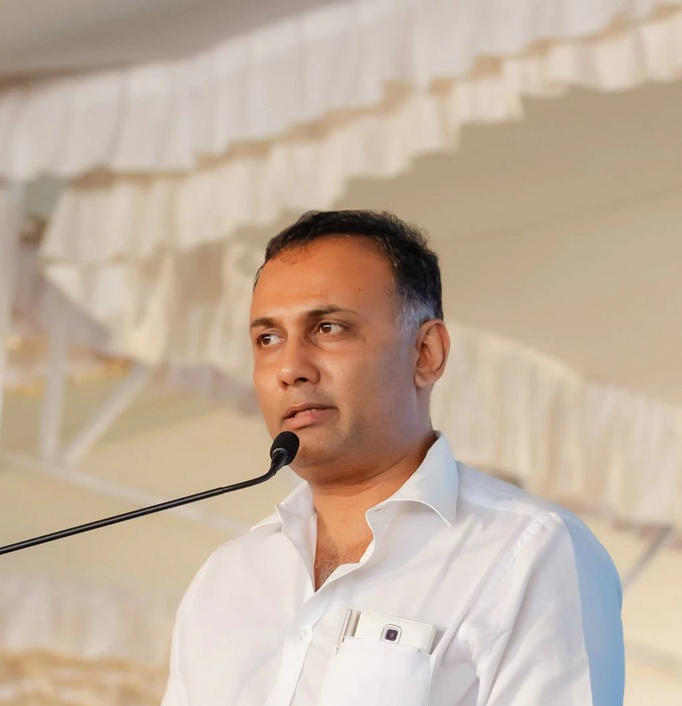
Implementing RPWD Act in B'luru falls short for people using wheelchairs
Sowmya Raju | NT
Bengaluru: Bengaluru, the IT hub of India, is often touted as a city of progress and innovation. However, beneath it lies a stark reality for people with disabilities, particularly those who rely on wheelchairs for mobility.
The city's infrastructure, despite significant strides in recent years, remains largely inaccessible, turning everyday tasks into daunting challenges for wheelchair users.
Sandeep Anirudhan, activist and Convenor of Citizens' Agenda for Bengaluru said, “The city is not accessible for non-disabled people itself this city is a nightmare to access, for people with wheelchairs, it is impossible. All of this, and every other problem in our city stems from the lack of Planning. We don't have urban planners employed under the Metropolitan Planning Committee, and we do not have a Masterplan or Comprehensive Devt Plans. In effect, we do not have any standards to follow. We are a backward city in terms of planning and administration. This is the root cause.”
The Rights of Persons with Disabilities Act, 2016 (RPWD Act) empower persons with disabilities and ensure their full participation in society. However, despite the enactment of the Act, its implementation in Bengaluru has been inadequate, leaving many people with disabilities struggling to access their rights and entitlements.
One of the key areas where the RPWD Act has not been effectively implemented in the city is accessibility.
Public spaces, such as bus stops, metro stations, and government buildings, often lack the necessary ramps, elevators, and other accessibility features, making it difficult for people with wheelchairs to navigate them.
This lack of accessibility hampers their mobility and restricts their participation in various aspects of life.
Public transport: A journey of obstacles
Commuting in Bengaluru is an ordeal for most, but for wheelchair users, it's a nearimpossible feat. Bus stops, often elevated and without ramps, serve as the first hurdle.
Buses, with their narrow aisles and high steps, are another barrier. The lack of accessible public transportation forces wheelchair users to rely on auto-rickshaws, which are often reluctant to accommodate them, adding to their daily struggles.
Raghavendra B Pachhapur, from Action Aid, said, “For individuals with disabilities, especially those using wheelchairs, the simple act of navigating the city remains a distant dream. The financial burden of transportation for them is significantly higher, given the lack of full accessibility to public transport.”
Even if people need to book a cab with wheelchair accessibility, they will have to pay twice or thrice the normal price to get that access.
Public spaces: A far fetched dream
The city's entertainment venues, parks, and other public spaces often fail to consider the needs of wheelchair users. Narrow entrances, steep ramps, and inaccessible restrooms make these spaces offlimits for many.
A physically disabled person who uses a wheelchair said, “When a city is designed without considering the needs of its citizens, especially those with disabilities, it reflects a failure on the part of the government to ensure accessibility for all.”
She said, “For a person like me, using a public toilet or taking the bus or even travelling 100 metres independently is a dream, expecting to go to parks and other public spaces is something that I can write in water.”
No access to the metro
The Bengaluru Metro Rail Corporation (BMRCL) stands out as a beacon of accessibility in the city. Metro stations are equipped with ramps, lifts, and tactile flooring, making them easily navigable for wheelchair users.
However, the access to the metro itself needs to be improved. Bus stops near metro stations are often inaccessible, and the lack of integrated feeder services makes it difficult for wheelchair users to reach the metro stations in the first place.
 English daily published in Bengaluru & Doha
English daily published in Bengaluru & Doha






